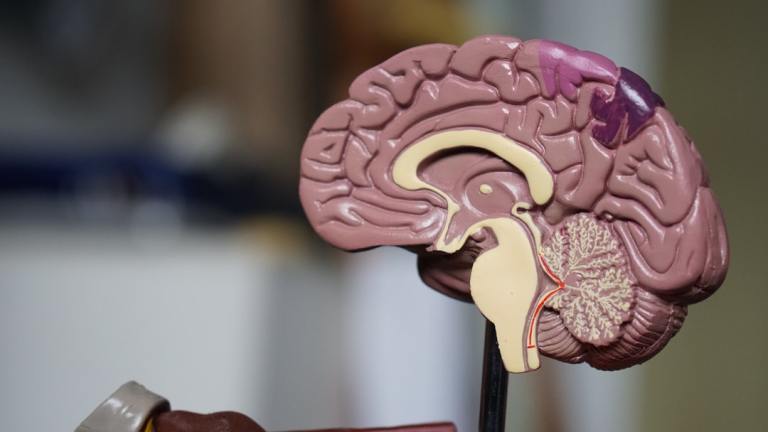Music Has The Power To Elevate Your Mind
Artists like Radiohead and Kanye have the power to tickle our brain cells with the same effect of sex or cocaine.

Music has often been referred to as sorcery, or a mysterious entity that has power over our minds that we can’t quite grasp. This creation of sound so abstract and subtle in its entirety, gives the ability to make us feel, act, and think a certain way. A simple combination of rhythm and melody has the potential to influence actions and feelings, as well as connect a crowd of people on a level they don’t quite understand. Given the studies on how notes and musical passages logged on paper have grown to be so radically powerful, Bill Nye was right when he said “science rules”.
Music stimulates us to feel a certain way through neurotransmitters called serotonin and dopamine. The catalyst of the serotonin is usually through a “shock” in your body created by an extraordinary sensation that can be as simple as chocolate, or a kiss. Rhythm is a “shock” for the brain due to of the consistency that resembles a heartbeat, or Alfa-rhythm of the brain.
Rhythm is electrochemical within the body through electrical messages and impulses in sound waves. Sound waves are picked up by the ear and are changed to messages and impulses. Neurons move these impulses along an axon to a dendrite and dendrite spine to a synapse. The space into the synapse is crossed by a chemical movement and moves electrically to the next neuron. The very fact that these impulses move billions of times a day, place them under the control of rhythm. Dr. William Sargent explained:
“Electrical recordings of the human brain show that it is particularly sensitive to the rhythmic stimulation by percussion and bright light among other things, and certain rates of rhythm can build up recordable abnormalities of brain function and explosive states of tension sufficient enough to produce convulsive fits in predisposed subjects. Of the results caused by such disturbances, the most common one is temporarily impaired judgment and heightened suggestibility.”
Artists like Radiohead and Kanye have the power to tickle our brain cells with the same effect of sex or cocaine.
Studies conducted by combining methodologies (PET and fMRI) showed an impressively precise portrait of music on the brain.
Dopamine is released in both the dorsal and the ventral striatum, the two regions associated with response and pleasurable stimuli, giving the mind and body reactions similar to temptation or excitement. Attention deficit hyperactivity disorder can often affect learning and memory, but can be improved when the right amount of dopamine is administered. When dopamine levels in the brain are healthy, we are able to focus and retain information at a higher pace, enhancing spatial IQ by increasing short and long term memory.
Although rhythm has the ability to excite us, the tension from rhythm can be dulled by repetition, making us feel bored or uninterested. Luckily, the dynamics of the melodies and contrasts in chords and tempos keep the mind stimulated. This psychological principle was analyzed by the musicologist Leonard Meyer in his classic book Emotion and Meaning in Music (1956). He analyzed the 5th movement of Beethoven’s String Quartet in C-sharp minor, with the intention to show how music is defined by its flirtation with – but not submission to – our expectations of order. Fifty measures of Beethoven’s masterpiece were dissected, showing how Beethoven begins with the clear statement of a rhythmic and harmonic pattern and then, in an intricate tonal dance, carefully avoids repeating it. What Beethoven does instead is suggest variations of the pattern. He is its evasive shadow. If E major is the tonic, Beethoven will play incomplete versions of the E major chord, always careful to avoid its straight expression. He wants to preserve an element of uncertainty in his music, making our brains beg for the one chord he refuses to give us. Beethoven saves that chord for the end. These studies make music sound like dating, which isn’t shocking given the fact that the neurological dopamine similarities of love are uncanny.
In an fMRI of the brain looking at something it loves, dopamine levels rise to feel the same level of bliss in the same areas of the brain. Unlike music stimulating serotonin, love has the ability to make serotonin levels drop as they commonly would with obsessive-compulsive disorder, being that they are only focused and almost “obsessed” with their partner. This is what causes the observation that “love is blind”.
Given the scientifically proven power of music, it is easier to take a step back and understand how we can leverage it. Just as people connect with others on a personal level through neurotransmitters, musicians and conductors unknowingly found a way to connect crowds by provoking emotions in an almost identical manner. Listening to music gives the ability to focus your mind on other things while it is opened and stimulated. As they say love is blind, it can also be said that music is all seeing, with music’s power to stimulate and open the eyes of the mind. Music is not sorcery, but a tool that we can use to enhance our feelings, connect with others through emotions, and stimulate our learning and memory. Music is intangible chemical love that opens our eyes and our minds. ![]()




